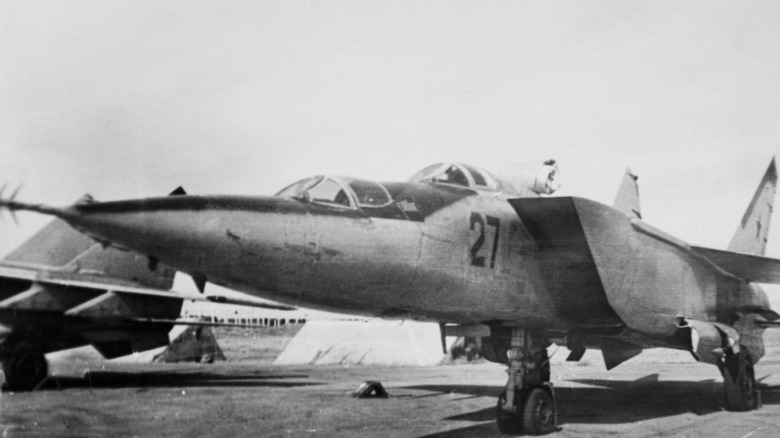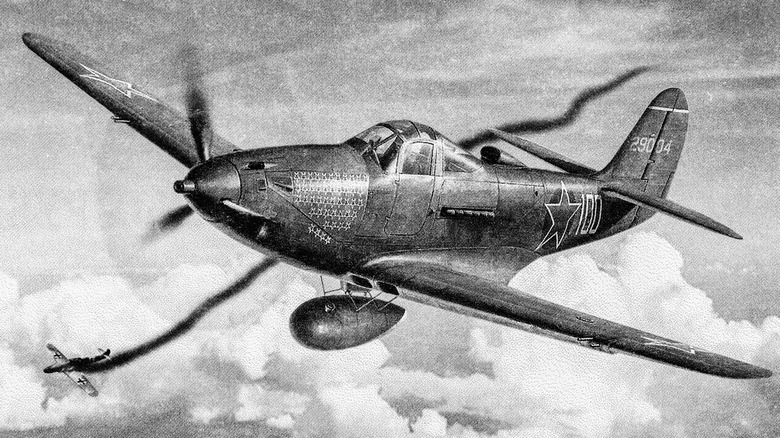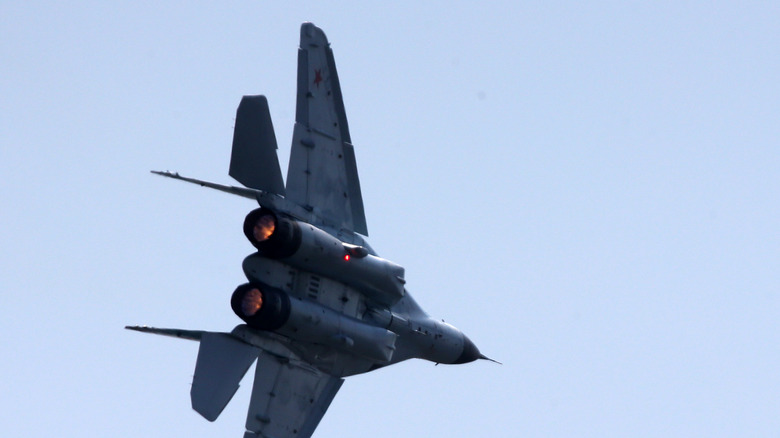The Story Behind The Original MiG Soviet Fighter Plane
The Soviet MiG (or Mikoyan-Gurevich) fighter plane is the classic "bad guy" aircraft and has been featured in numerous pop culture productions as the counterpart to whatever NATO forces are flying, from Cold War fighter jets like the F-4 Phantom, Tom Cruise-piloted planes in the "Top Gun" movies, or the stealth jets of today. Whenever there's an American plane flying a mission in a movie, TV show, or video game, MiGs aren't far behind.
However, MiGs weren't always the plane of the enemy faction, and the nomenclature goes all the way back to World War II, when the Soviets fought for the Allied forces in the campaign against the Nazi Third Reich's Luftwaffe. As one would expect, the first MiG was named the MiG-1, about which official information is scant. Eventually an upgraded MiG first entered the Soviet airborne arsenal in 1941 after successful flight tests in 1940. That plane was dubbed the MiG-3.
The MiG-3 enters the fight
According to the Palm Springs Air Museum, the MiG-3 was devised at a time when the world was gearing up to fight a large scale conflict as the German Nazis began their invasion of Europe. At the beginning of World War II, the Soviet Union was at an uneasy truce with Germany. That quickly became null after the Germans blitzed Russia in Operation Barbarossa during the summer of 1941. Now, German planes were in the sights of the MiG-3.
Planes like the American P-40 and British Spitfire were contemporaries, but either outperformed or outgunned the MiG in most ways as it had only one 12.7 mm gun and two 7.62 mm guns to start. Notably, it couldn't keep up with its main adversary, the German aircraft Messerschmitt Bf 109. Compared to later planes like the American P-51 Mustang, further advancements in the Spitfire, and Germany's first jet fighters, the MiG would be hopelessly outdated.
Not the Soviet's best work
Right from the outset of the war, it was designed to intercept high-altitude bombers and engage from long ranges. In practice, the MiG-3's combat role wasn't as clean cut. It only became a "fighter" plane out of necessity as air-to-air fights were happening at closer distances than originally anticipated. Unlike other MiGs that would come later and become some of the most ubiquitous aircraft in the sky, the MiG-3 wasn't a fantastic plane right out of the gate.
It was decidedly not a winner as far as World War II aviation is concerned. The planes were a maintenance nightmare and hard to fly. According to the Palm Springs Air Museum, around 3,400 MiG-3 hit the skies. But the plane was shot down in great enough numbers that only three survive today, and none have the original liquid cooled V-12 engine.
Given the closed off nature of the Soviet Union after splitting up Europe, very little reliable information about the early MiG exists. It wasn't until the 1950s and 1960s when jet-powered MiGs showed up against American fighters that the Western world took notice of what was coming out of Russia's aircraft factories. As for Soviet World War II fighters, planes like the Ilyushin Il-2 "Shturmovik" took center stage, leaving the MiG-3 in relative obscurity.


